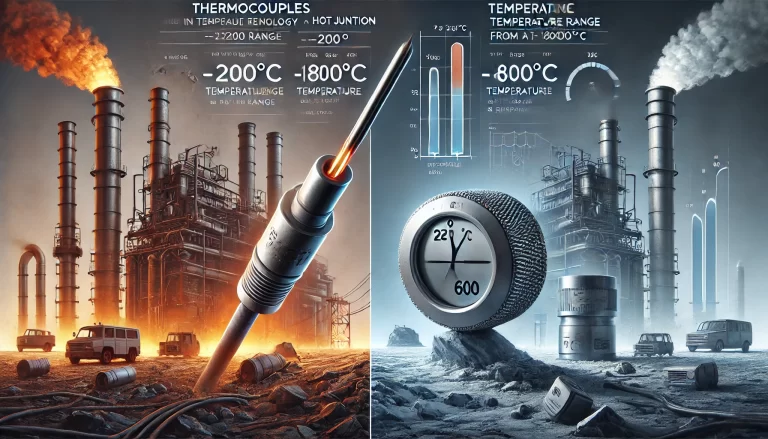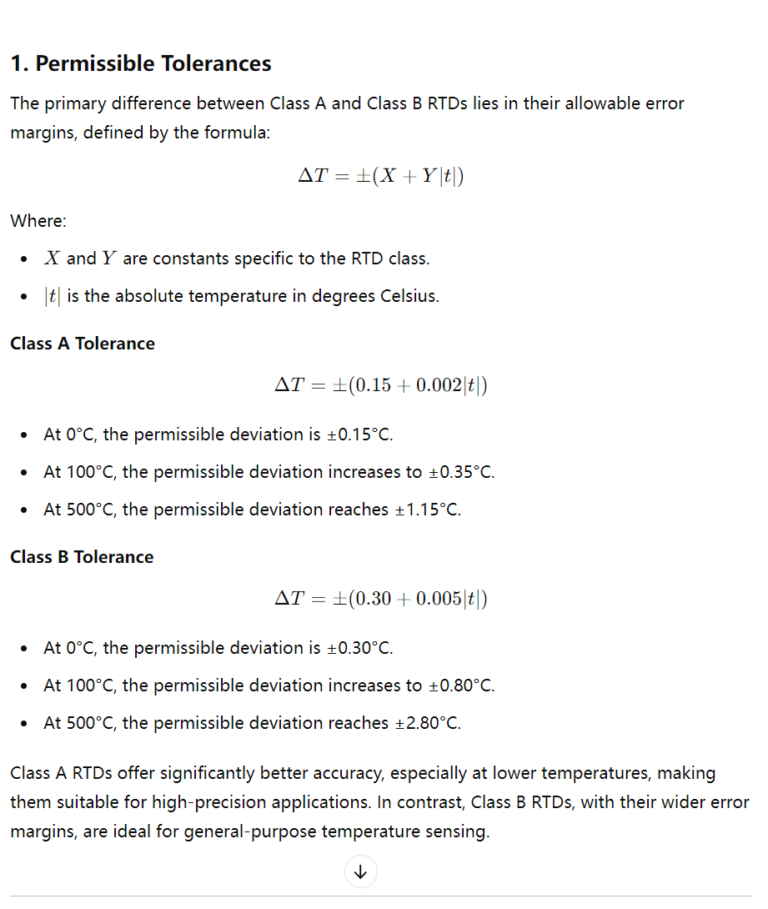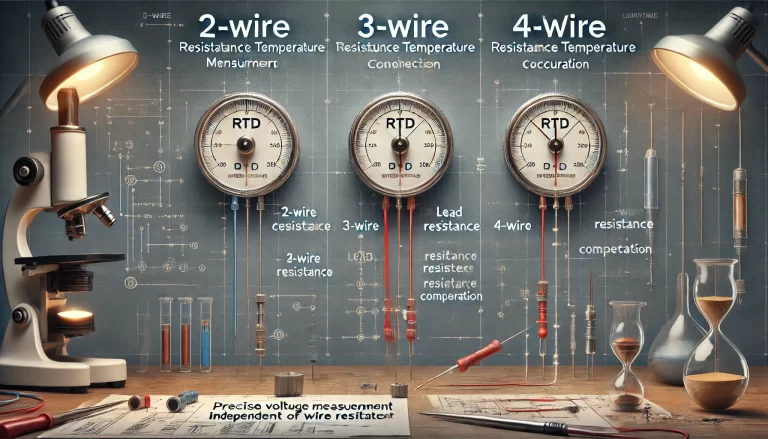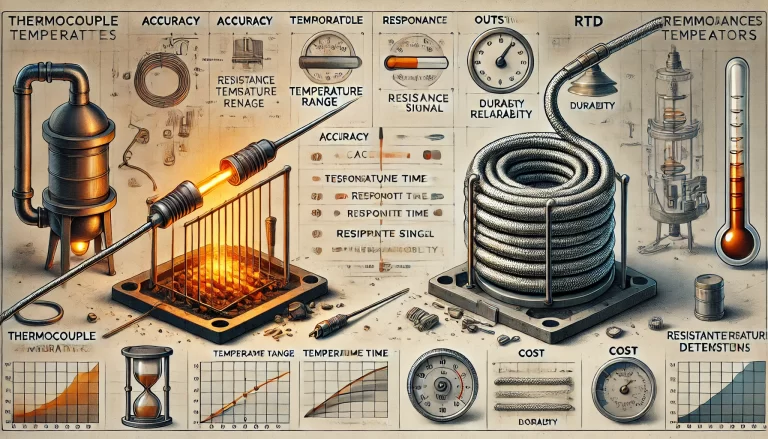Resistance Temperature Detectors (RTDs) are widely used temperature sensors that measure temperature by correlating the resistance of the sensor material (usually platinum) to temperature changes. RTDs are commonly classified into accuracy classes, with Class A and Class B being the most frequently used. These classifications, based on standards such as IEC 60751 and ISO 17025, determine the accuracy and permissible deviations of RTDs in temperature measurement.
This article delves into the distinctions between Class A and Class B RTDs, focusing on their error tolerances, construction, applications, and cost implications.



2. Construction and Material Quality
To achieve higher precision, Class A RTDs demand superior construction techniques and higher-quality materials. Key differences include:
- Platinum Purity: Platinum used in Class A RTDs is refined to higher purity levels to minimize resistance inconsistencies.
- Manufacturing Tolerances: Class A RTDs undergo stricter quality control during production to ensure the sensor maintains its specified resistance-to-temperature relationship.
- Dimensional Precision: The physical geometry of the platinum wire or thin film is more tightly controlled in Class A RTDs to reduce deviations.
In comparison, Class B RTDs have looser manufacturing tolerances, which is why they are less expensive and have broader error ranges.
3. Temperature Range
- Class A RTDs: Typically operate within a narrower range, such as −200°C-200°C−200°C to 650°C650°C650°C. Their accuracy decreases rapidly beyond this range.
- Class B RTDs: Can often be used in a broader range, such as −200°C-200°C−200°C to 850°C850°C850°C, but with reduced precision.

4. Applications
The choice between Class A and Class B RTDs largely depends on the application’s precision requirements:
Class A Applications
- Precision Laboratories: Calibration setups and high-accuracy experiments.
- Pharmaceuticals: Monitoring critical processes where even small temperature deviations can impact product quality.
- Medical Devices: Equipment like incubators and surgical instruments that require tight temperature controls.
- High-Precision Industrial Controls: Aerospace, nuclear power, and specialty chemical processes.
Class B Applications
- General Industrial Use: Applications where moderate accuracy suffices, such as HVAC systems, refrigeration, and environmental monitoring.
- Process Control: Non-critical temperature measurements in manufacturing plants.
- Consumer Electronics: Appliances like ovens, water heaters, and coffee machines.
5. Cost Considerations
Due to their stringent manufacturing requirements, Class A RTDs are more expensive than Class B RTDs. The higher cost is justified in applications where precision and reliability are paramount. Conversely, Class B RTDs are more cost-effective and widely used for standard applications where absolute accuracy is less critical.

6. Practical Selection Tips
When choosing between Class A and Class B RTDs, consider the following factors:
- Accuracy Needs: Use Class A for applications requiring high precision.
- Temperature Range: For measurements at extreme temperatures, Class B might be more practical.
- Budget Constraints: Class B RTDs offer a cost-effective solution for non-critical use.
- Environmental Conditions: High vibration or pressure may affect measurement accuracy, making ruggedized Class B RTDs a better choice.

Conclusion
Class A and Class B RTDs cater to different requirements in temperature measurement, with Class A focusing on precision and Class B prioritizing versatility and cost-effectiveness. By understanding their differences, you can select the RTD that best aligns with your specific application needs.
